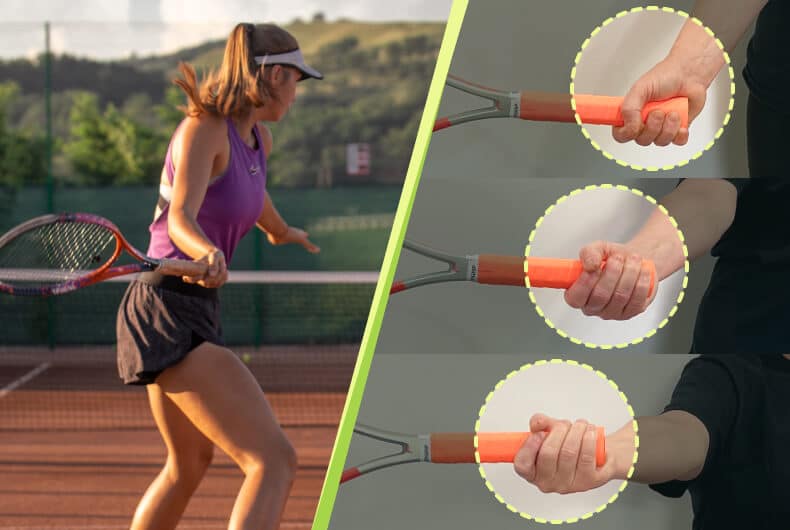
Stay in the loop!
Want to be updated when we publish? Be sure to sign up for our newsletter. No spam, we promise!
It's no coincidence that in the recent era Nadal has dominated the clay of Roland Garros and Federer has dominated the grass of Wimbledon. Their forehands have some distinct differences. One of them is “grip”. Here are the main differences between the forehand grips and what each offers.
The “Big Three” Grips
Up until the 1970's there was one main grip in tennis - the continental grip. The sport was more sedate and the swings were simpler. The continental grip enabled all court play - serve, groundstrokes and net play - without really having to change hand position! But in recent years technology and physical ability has meant faster ball speeds. We now need topspin to keep the ball in the court. See our article on “Why you need topspin no matter your level of tennis”.
Since then 3 main forehand grips emerged in succession and today dominate the game. The Eastern, Semi-Western and Western Grips.
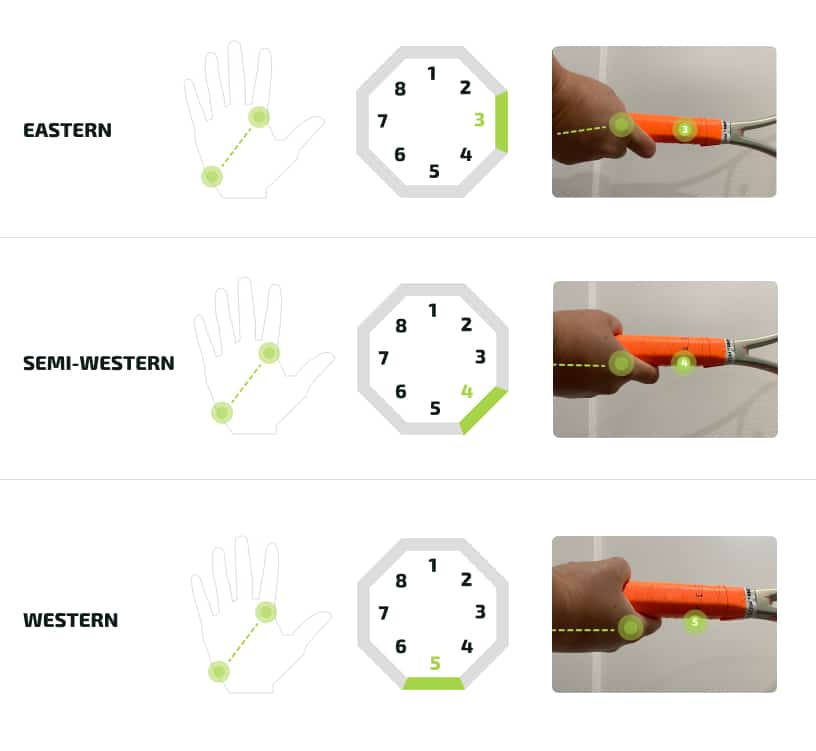
- Eastern Forehand - The traditional eastern forehand evolved as a popular grip in the 1970s. Players like Bjorn Borg slid their hand ever so slightly round the handle from the standard continental grip and started applying topspin to the ball. This began the spin and power revolution! (See our blog "8 Ways topspin gives you a tactical edge") Many players use an extreme eastern grip - shifting their hand slightly towards semi-western grip so the knuckle is close to the ridge.
Players: Roger Federer, Stefanos Tsitsipas, Serena Williams. - Semi-Western Forehand - As technology changed and players became more athletic the grips slid even further round. The “windshield wiper” shape we see in today’s game evolved from the semi-western forehand. This grip allowed players to reach the higher bouncing topspin balls and not be caught on the defensive. Like the variation with the eastern, some choose a strong to extreme semi-western grip.
Players: Novak Djokovic, Rafa Nadal, Naomi Osaka. - Western Forehand - The western, a further 45 degrees around the racket, then evolved to enable players to cope with the even higher bounces of semi-western forehands and enable players to send them back with extreme topspin.
Players: Karen Khachanov, Jack Sock, Kei Nishikori

TopspinPro for Tennis Training Aid
- Practice anywhere
- 2 mins per day
- Rapid results
5 factors that influence grip
The forehand grips have evolved over time. So why hasn't every player ended up with the most 'modern' forehand, the western? There are a number of factors that affect grip choice and they vary from player to player. Here are the most important factors to consider when choosing the right grip for you:
Player Height
Your height plays a major role when choosing the right grip. A taller player will find the ball bouncing lower in relation to their body than a shorter player. Therefore taller players tend to favor grips that allow them to reach low (eastern and semi-western) and shorter players tend to prefer grips that allow them to reach higher balls (semi-western and western).
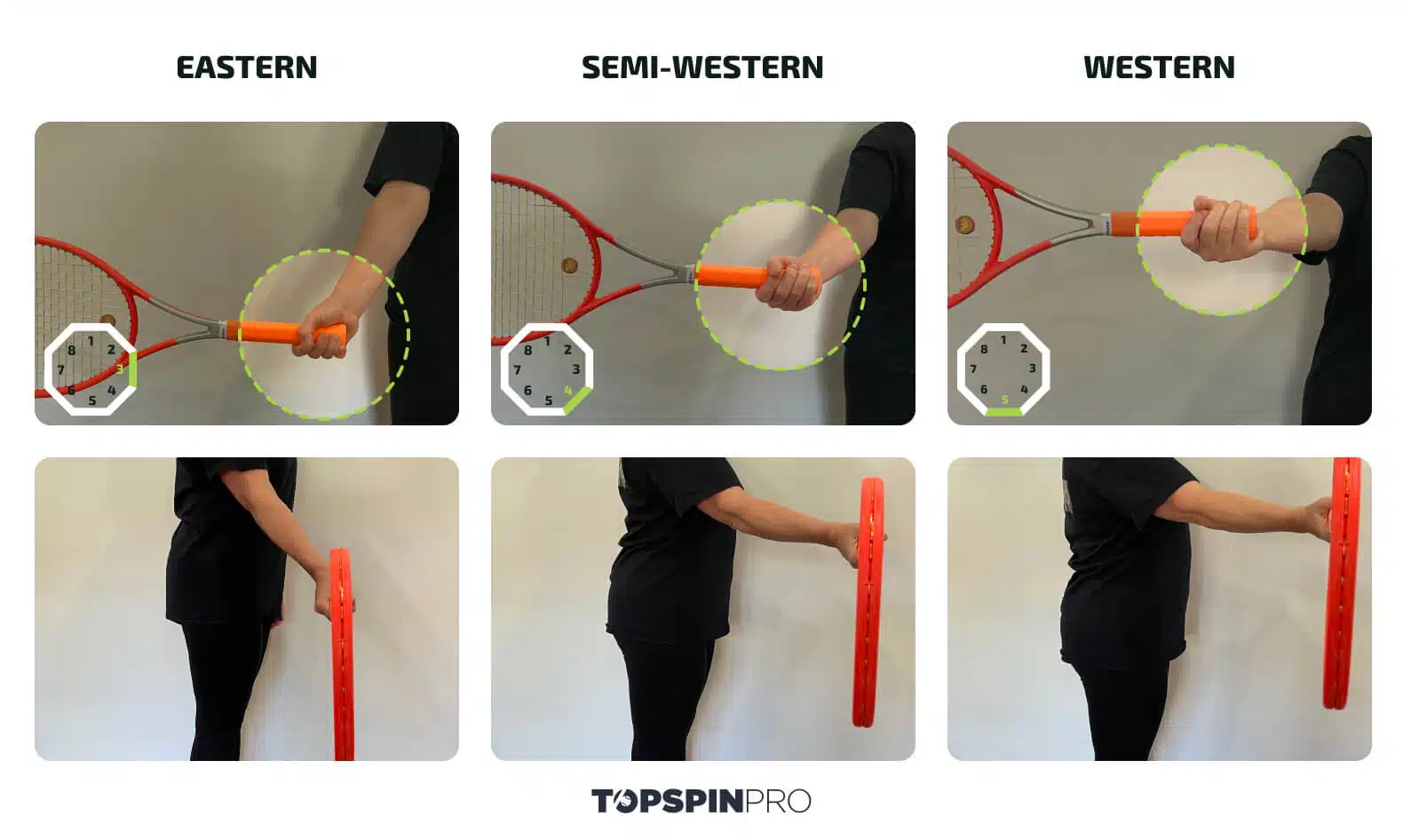
Court surface
Court surface is as important as player height. Grips are often “environmentally developed" ...this means that the court you learn to play on directly affects your grip. Unless you are told specifically over and over to hold the racket a certain way then your hand will naturally shift to hold it in the most comfortable way for the bounce.
This is why pro players who grew up on different surfaces and in different climates (see below) have varying grips and styles of play. There is only 1 inch height difference between the "Big Three" (Federer: 6’1”, Nadal: 6’1”, Djokovic 6’2). So we know it's their experiences as juniors that created the differences.
Each of the forehand grips forces a different contact point (both height and distance from body). Eastern being the lowest contact point and Western the highest.
Court surface affects both the speed and height of the bounce. If you are regularly playing on a high bouncing court then you will probably prefer a grip that allows you to reach high balls (semi-western and western) more comfortably and vice versa for a lower bouncing court (eastern). However an above or below average height individual may have to adjust their choice. For example, a tall player on a high bouncing clay court may prefer an eastern forehand as the ball bounces low in relation to their body compared to the average height player. Here’s what each contact point looks like and which grip is ideal for each surface:
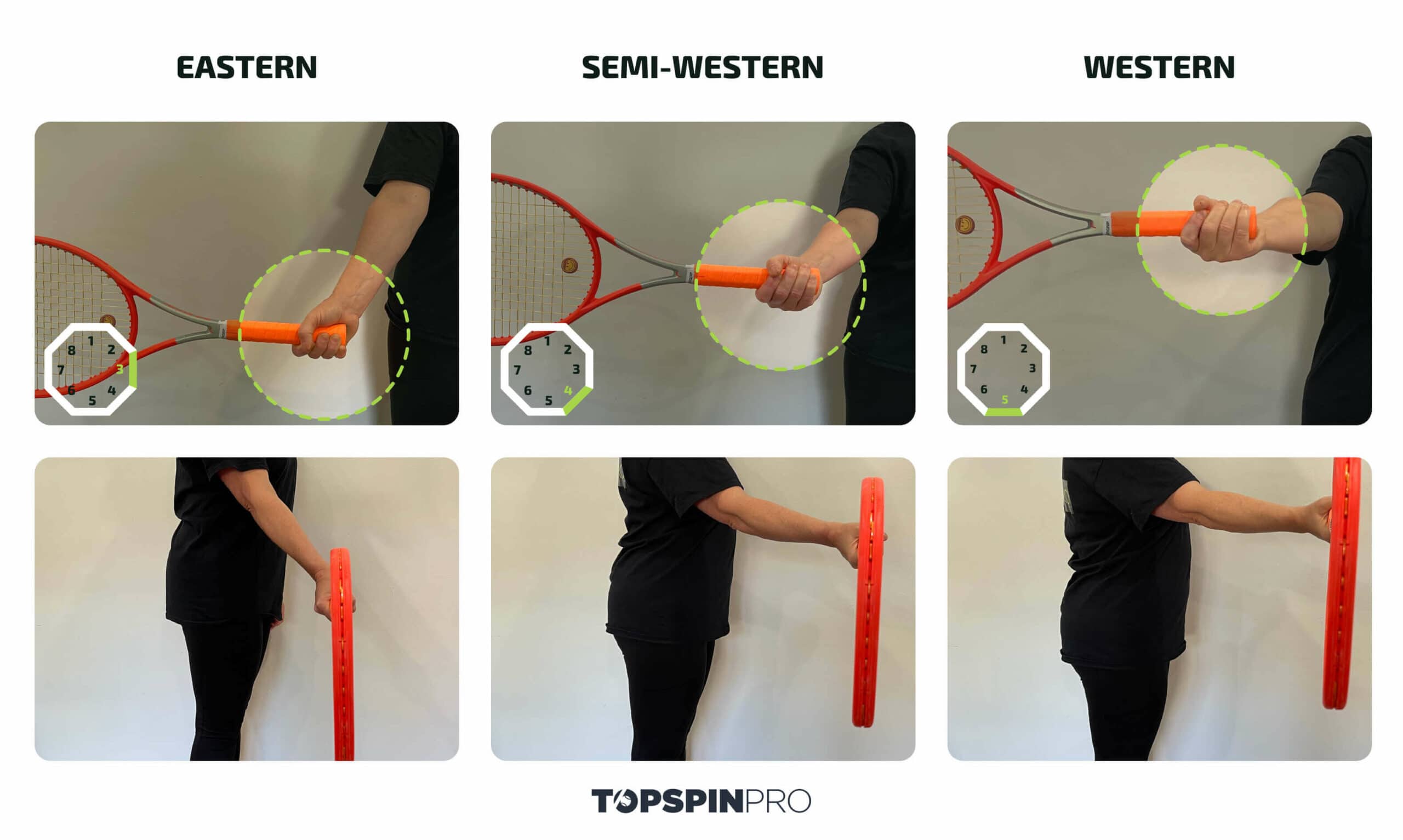
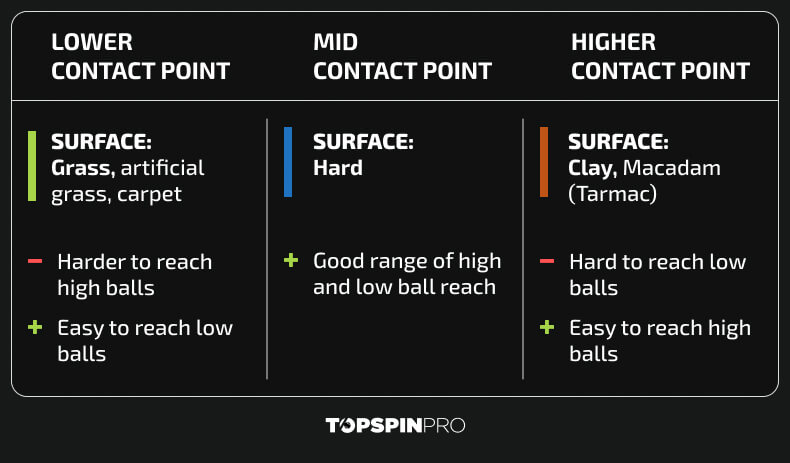
Let’s look at Federer, Nadal and Djokovic, their grip choices and the surfaces they have dominated.
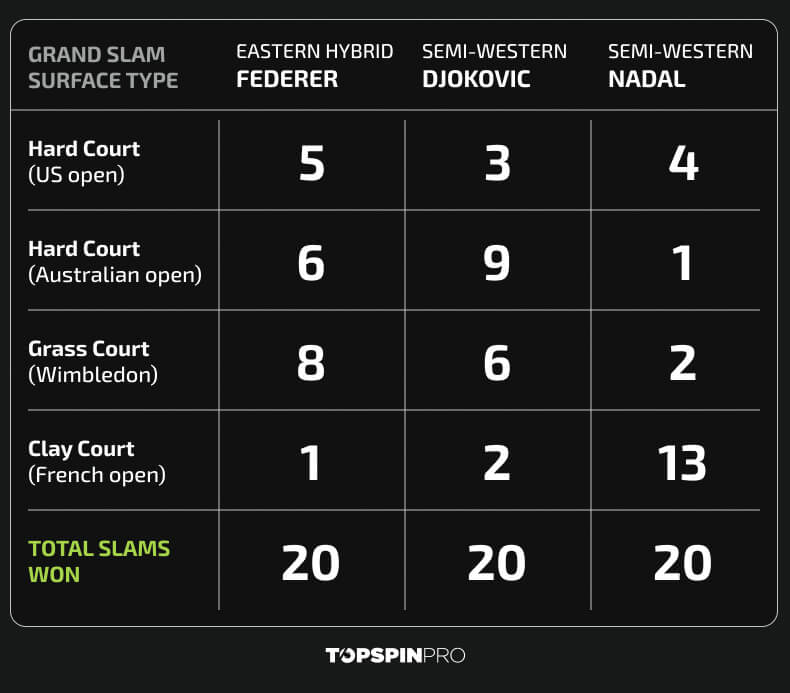
Given the bounce on clay it's perhaps surprising Nadal didn't end up with a western forehand grip!
Topspin and Power
At pro level, heavy topspin can be hit using any grip but for the average player here’s what each typically offers:
Eastern Forehand Grip: Less Topspin - More Power
Semi-Western Forehand Grip: Mid Topspin - Mid Power
Western Forehand Grip: More Topspin - Less Power
Given the consistency and accuracy topspin provides (can clear the net comfortably and still land it well before the baseline) it is an important consideration for recreational players.
Climate
Climate plays a huge role in grip choice and development. It affects the ball and therefore your grip:
Temperature: When temperatures rises, the air pressure inside the tennis ball increases, resulting in a higher bounce. Play somewhere cold and you will find the ball barely bounces.
Humidity: Increased humidity makes the ball heavier and slower.
Wind: Wind affects flightpath and bounce. If you usually play indoors then you're in for a shock when you play in the wind.
Altitude: You may feel like a beginner again when playing tennis at altitude for the first time. The reduced atmospheric pressure at higher altitude, means the internal pressure of the tennis ball is greater, which in turn causes the ball to bounce higher off the court and faster off the strings. This thinner air also does a poorer job of slowing the ball down meaning higher ball speeds.
Style of play
Your playing style also dictates your grip choice. If you enjoy approaching the net then you are probably going to prefer the eastern to semi-western grip will can be changed to the continental volley grip easily. If you are an aggressive baseliner who likes to hit big with topspin and power and occasionally comes to net then a semi-western grip is probably for you. A baseliner may prefer a grip like the western to play those higher balls with pace.
Choosing a grip that is right for you
When it comes to choosing your grip, first consider your height, the surface and what power to spin ratio matches your style of play. Then make adjustments for climate. The semi-western grip is the most popular grip on the pro tour because it enables a blend of power and topspin while allowing both low and high balls to be reached with reasonable ease. You can also adjust more comfortably to changing court surfaces. Here's a summary of what each grip offers:
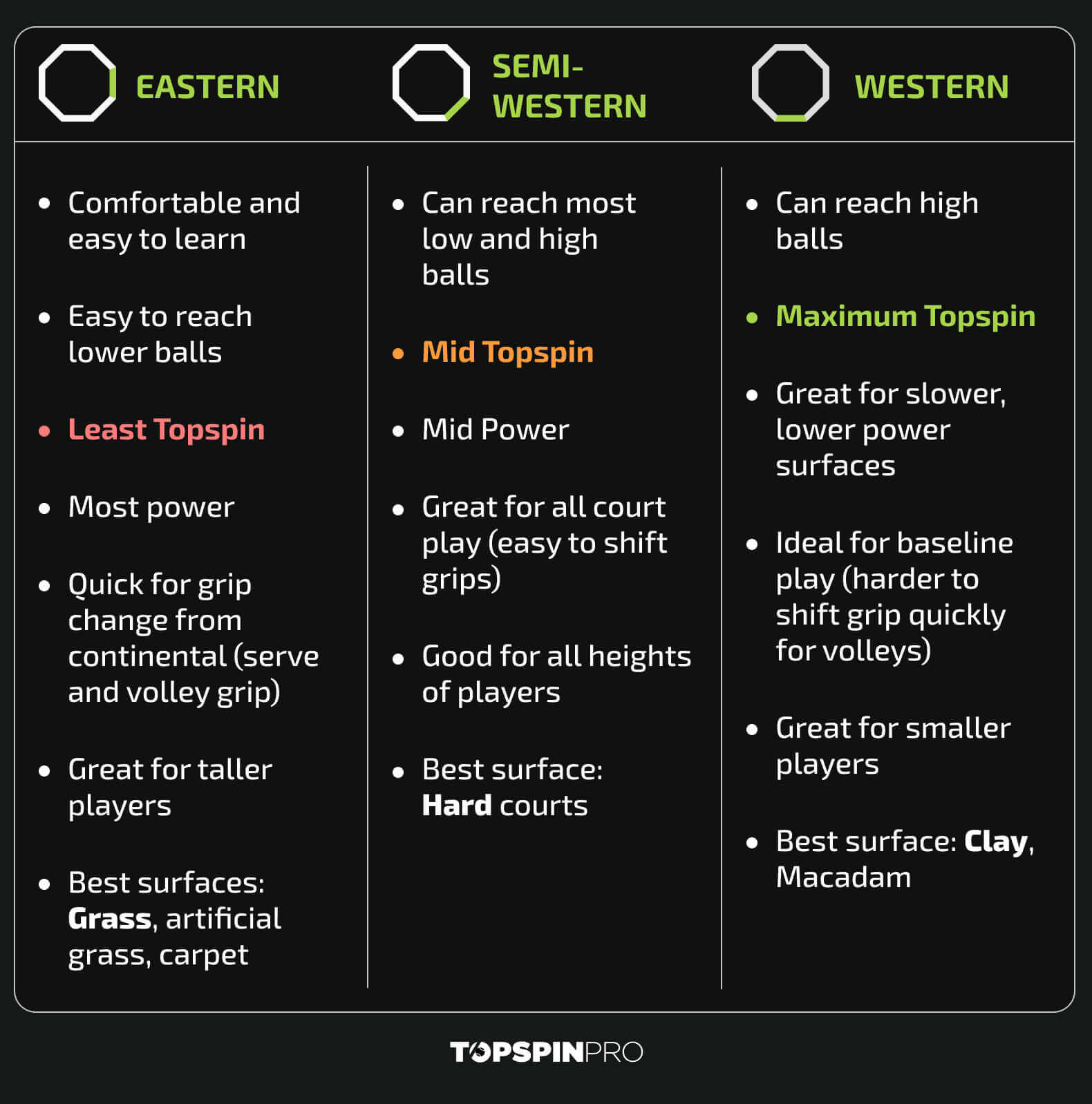
Or maybe you just want to copy your favorite pro. Federer, Nadal and Djokovic have all been successful across different surfaces, it just depends which one you want to dominate!
----------------
Let us know about your forehand grip experiences and what you think of this post in the comments below.
If you want to get a little more guidance with your forehand you can check out our online course here.

TopspinPro for Tennis Training Aid
- Practice anywhere
- 2 mins per day
- Rapid results
FAQs
-
What are the main differences between the forehand grips in tennis?
The main forehand grips in tennis are the Eastern, Semi-Western, and Western grips. They differ in the angle of the hand on the racket and the amount of topspin and power they generate. Each grip offers unique advantages depending on factors like player height, court surface, and playing style.
-
How does player height influence grip choice?
Taller players often prefer grips like the Eastern and Semi-Western that allow them to reach lower bouncing balls comfortably. Shorter players might favor the Semi-Western and Western grips to handle higher bouncing balls more effectively.
-
Why is court surface important in choosing a forehand grip?
Court surface affects the speed and height of the ball’s bounce. High-bouncing surfaces like clay might make a player prefer grips that handle high balls well, such as the Semi-Western and Western grips. Conversely, low-bouncing surfaces might make the Eastern grip more suitable.
-
How do topspin and power vary with different forehand grips?
The Eastern grip typically offers less topspin and more power. The Semi-Western grip provides a balance of topspin and power, while the Western grip delivers more topspin but less power. This variation allows players to choose a grip that matches their strategic needs on the court.
-
How does climate affect forehand grip choice?
Climate influences ball behavior, which can affect grip choice. For instance, higher temperatures increase ball bounce, while humidity makes the ball heavier and slower. Wind and altitude also alter ball flight and bounce, requiring grip adjustments to maintain effective play.
Enjoyed this article?
Be sure to sign up for our newsletter and we'll keep you up to date about new posts
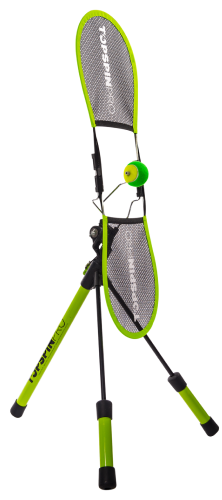
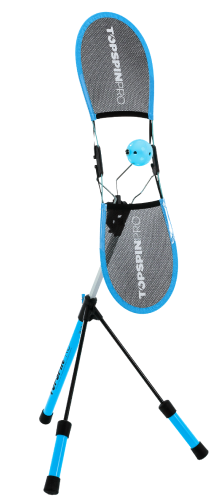
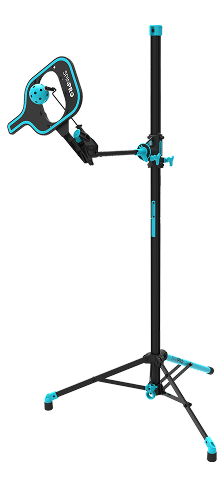


1 comment
Another match I remember watching! Glad Rafa got his chance but Roger is still my man…
Interesting article – I think I’m too old to change my grip but enjoyed finding out the origins of the grips.